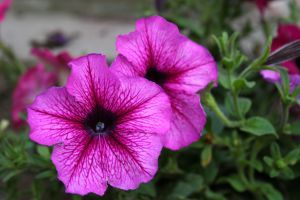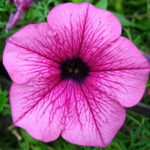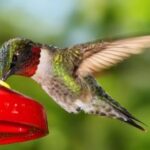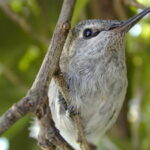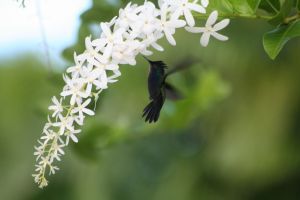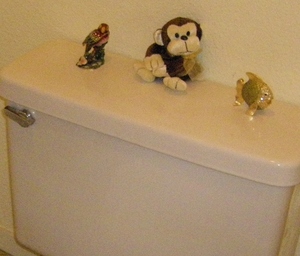Masses of petunias fill summer beds and borders in the summer months. Some people consider petunias to be common, but there is a good reason for that. Petunias are popular to use because they are successful in gardens. These reliable, dependable bloomers reward the gardener with a summer full of colorful blooms and fragrance.
Petunias are popular in gardens, beds, borders, pots and hanging baskets. They are versatile and dependable. Petunias can smell great, depending upon the variety. Hummingbirds and moths are attracted to petunias. Petunia’s are great plants for the home gardener.
The petunias that we see growing in masses today are much different from the original petunias. The first sighting of a petunia by European, was in South American in the 1500’s. The field petunia was a scrubby, scruffy plant. Today, petunias all feature trumpet to saucer shaped blooms. The trumpet shaped blooms of color form blocks of colors, when planted in masses.
Today, most petunias are hybrids. Unfortunately, much of the breeding that was supposed to improve the plants resulted in loss of the delightful fragrance inherent in the plants. Fortunately, for gardeners, not all petunias have lost their sweet perfume. There are still many varieties with a wonderful fragrance. Petunias that are white, blue and mauve usually have more fragrance than other colors.
Petunia come in all the colors of the rainbow. They come in bright colors or soft pastels. Shades of pink, salmon, red, rose, -pink, burgundy, violet, lilac, yellow, purple and white can be planted in dramatic masses of color. There are variegated petunias, with stripes, edges, veins and contrasting colors.
There are also variations in the shapes of the flowers, some flowers are simple bell shaped blooms while others have fancy, ruffled edges. The single blooms seem to be more prolific bloomers than the more ornate varieties.
Petunias like to be planted in sunny spots, so they can receive full sun or light shade. Petunias prefer rich, moist well drained soil but can tolerate poor soil They don’t do well in windy sites or wet conditions.
Petunias can be started from seed by sowing them indoors 10 to 12 weeks before planting season. Garden nurseries and garden centers usually have a plentiful supply of many types of petunias. Petunias grow t6 to 18 inches tall and should be spaced 12 to 14 inches apart. After planting petunias in the soil, pinch them to encourage branching and bushy growth. Deadhead the spent blooms to encourage new blooms to grow. Feed container plants every three weeks.
Petunia hybrids include Grandifloras, Mulitfloras, Wave Series multifloras, Fantasy, Million Bells, supertunia and Surfinia. The Grandflora petunias bear 4 inch wide flowers. Grandifloras are best in sheltered sites, since the flowers are easily damaged. Multiflora petunias are bushier plants with 2 inch flowers that are more abundant that Grandifloras. Wave Series include the popular “Purple Wave”” they are vigorous plants that can be used as ground cover and look great in containers and hanging baskets.
Plant petunias as a mass, in combination with other flowers, as a border, in a container or hanging basket. Petunias look terrific in front of taller plants. They can be combined with other annual plants or with perennials. The colorful, lively flowers will add fancy to the garden landscape.
Resources:
Burpee: the Complete Flower Gardener, The Comprehensive Guide to Growing Flowers Organically, by Karan Davis Cutler and Barbara W. Ellis
